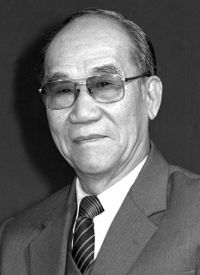Hou Baolin
On Nov. 29, 1917, Hou Baolin was born in Beijing. Hou Baolin was apprenticed from the age of 12 with the Beijing opera. However, he soon switched his focus onto “xiangsheng,” a Chinese comedic dialogue performance, successively following Master Chang Baochen andZhu Kuoquan. In the historical development of the art of xiangsheng, Hou was the most renowned practitioner.
Hou began making his name starting from 1940 in Tianjin. After the founding of New China, in order to promote modern xiangsheng, Hou Baolin joined the Beijing Xiangsheng Development Group and enthusiastically plunged into the movement of reforming xiangsheng, making remarkable achievements. In 1955, Hou became a member of the China Broadcasting Performing Arts Group (CBPG). During this period of time, he made great contributions to expand the art of xiangsheng. In 1979, Hou bid farewell to the stage and turned to engage in folk art theoretical research. In 1980, he was invited to Japan to study the features of Japanese folk art. The most loved and widely known by the Chinese of his numerous works include “Walking at Night,” “Opera and Dialect,” “Changing Career” and “Lord Guan Fights Qin Qiong.” He was also co-author of the “Introduction to Opera,” “Xiangsheng Art Theory” and “Xiangsheng Through the Ages.” He was elected as a representative of the fourth and fifth National People's Congress and vice president of the Chinese Quyi Artists’ Association. He also served as a part-time professor at Peking University and other institutions.
